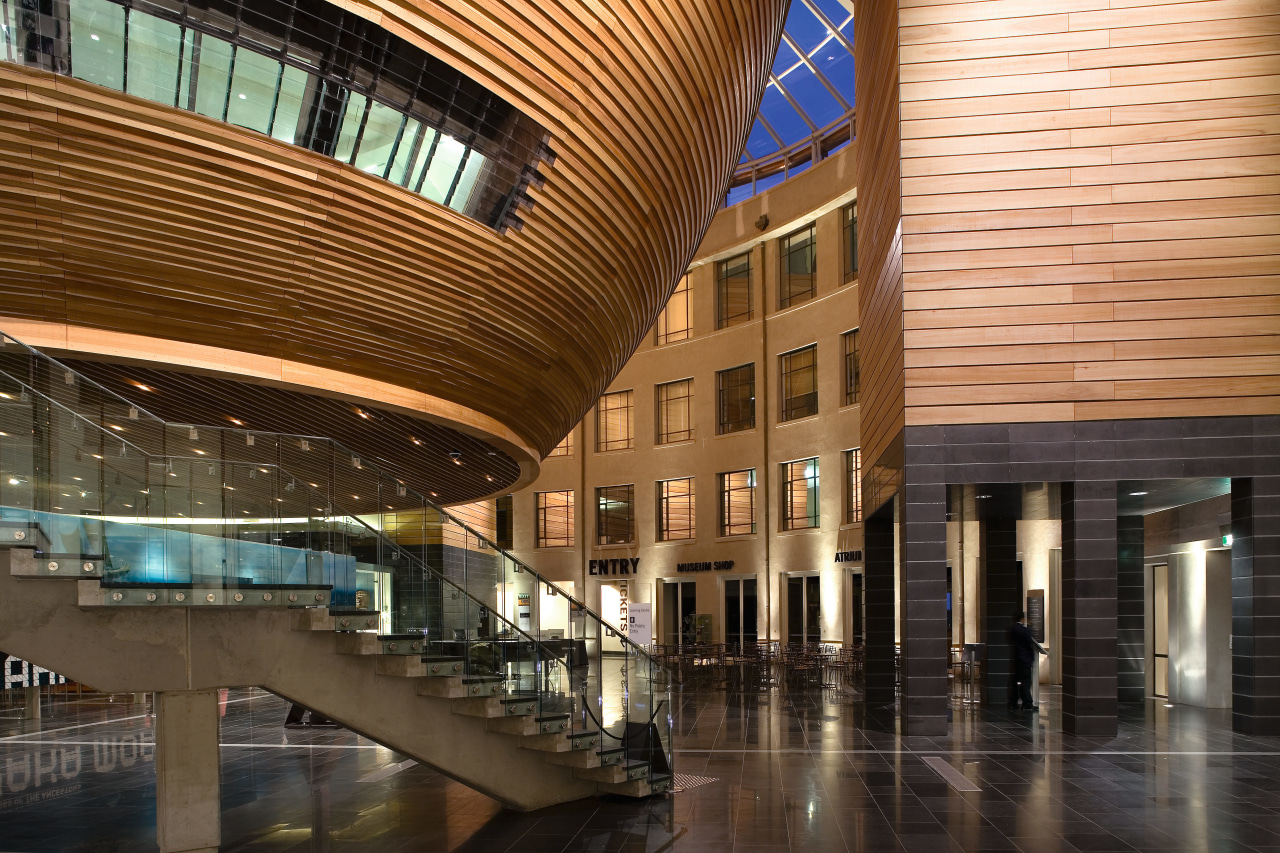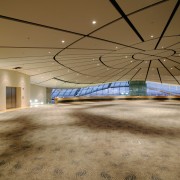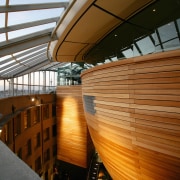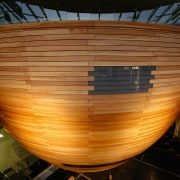Crowning glory
A suspended bowl and undulating roof an engineering challenge of great complexity keenly tackled by Holmes Consulting
TWELVE YEARS is a long time to dedicate to a project. Then again, for an engineering company, hanging a four-storey bowl crowned with a dome of copper and glass inside one of the country's most treasured buildings is a unique opportunity.
For Holmes Consulting Group, the 12 years spent working on Stage I and Stage II of the museum's augmentation have been well spent. Feats of engineering intricacy such as this rarely arise, and it has been a rewarding project in which to be involved, says Chris Mackenzie, the company's director.
"It has also been a challenging project, requiring a number of specific engineering solutions. What was exciting was how all the major players got right behind Noel's design. Once the possibility was there, we all fought to preserve the uniqueness of the design. A great satisfaction was how little it was compromised."
The design created by Lane is a little like a Russian doll, says Mackenzie.
"It's a building within a building within a building, and that provides a high level of drama and interest, both inside and out. One of our first challenges was with the proposal to suspend the bowl," he says. "As the design evolved, we developed a solution based around a primary megaframe."
This megaframe comprises storey-deep steel box trusses, arranged in a cruciform configuration. The four steel truss towers house the main service shafts for the courtyard building, including lifts and services risers, and a stair, and also provide important bracing. This multi-purpose approach, which is also evident in other areas, meant that the premium of incorporating a suspended object was reduced.
"The bowl structure is an independent structure hanging from the trusses and seismically separated from the surrounding floor plates," says Mackenzie.
"If I were to narrow it down, I would say the bowl is my favourite aspect of the structure. However, you could consider the dome as the brand or the selling point."
Capping the addition, the dome spans a 47m gap over the original courtyard space. The structural steel trusses that radiate from its centre form the primary structure. These trusses are supported on a perimeter beam with a series of posts down to the new and existing roof structures. Aside from the dome and the bowl, Holmes faced other engineering challenges.
"One of the first tasks on site was to excavate 9.5m within the existing courtyard, to create the two basement levels. An effective retaining solution was developed, supplementing the inherent strength of the ground with a combination of rock anchors, piles and structural concrete beams. Piles were bored at 6m spaces adjacent to the existing building column pad foundations, with a perimeter concrete ring beam tying these together. The ring beam was anchored back under the existing building to provide support to the existing foundations and the top of the excavation."
Underpinning work, adjacent to the existing access tunnel under the original building, utilised pairs of continuous post-tensioned beams clamped on either side of the existing columns.
"It was a solution that fitted well within the limited space available beneath the underside of the ground floor structure," says Mackenzie.
The beams, which were designed to provide the necessary temporary support to allow excavation for the plantroom and truck dock to proceed, also form the permanent support solution, minimising the impacts on the truck dock space, with only one mid-span column supporting the post tensioned beams.
A further challenge for Holmes Consulting was the two-level underground carpark constructed in the space between the rear of the existing museum building and an underground water reservoir.
"It's a little known fact, but the Domain reservoir used to be Auckland city's main water supply. To construct the carpark we worked closely with Watercare, ensuring they were comfortable with our methodology. A lot of research into the history of the reservoir was also essential, and at one stage it was emptied, so its condition could be checked."
Retaining piles and a top-down construction methodology were adopted to minimise ground deflections adjacent the reservoir structure.
For more details, contact Holmes Consulting, phone (09) 965 4789. Email: auckland@holmesgroup.com, or visit the website: www.holmesgroup.com.
BUILDINGS OF historic value, such as the Auckland War Memorial Museum, are a special part of New Zealand's heritage. As such, protecting them for the enjoyment of future generations requires running comprehensive fire and safety risk assessment processes, and interweaving solutions into the fabric of the building.
At the museum, Holmes Fire & Safety provided specialist fire engineering solutions for the Grand Atrium, the basement areas and the two-level underground carpark.
One of the largest components of the project was construction monitoring, says Martin Feeney, principal of Holmes Fire & Safety.
"There were many design changes throughout the project, which meant it was necessary to ensure the fire separations provided adequate protection following each change," says Feeney
"Through specific risk assessment procedures we pinpointed the exact protection needs of the building elements, taking into account that at times of peak occupancy up to 700 people could be attending a function in the level three event centre, without restricting any of the functions in the atrium."
Specific assessment of the megaframe supporting the hanging bowl reduced the number of steel members that required further fire protection to less than 5% of the entire structure reducing costs substantially. The choice of materials also played an important role in fire protection, with basalt wall cladding up to 4m high acting as a shield to the steel structure. A sprinkler system incorporated into the bowl helped fulfil the architect's vision for untreated timber, while on surrounding walls, a flame-retardant coating was applied to the Fijian kauri up to a level of 7m.
Innovative features included powerful, 50m³/s fans to remove smoke above level three, and a number of specific egresses for the level three event centre.
For more information, contact Holmes Fire & Safety, phone (09) 308 7030. Email: info@holmesfire.com, or visit the website: www.holmesfire.com.
Story by: Trendsideas
Home kitchen bathroom commercial design








